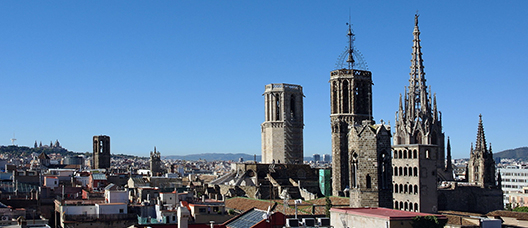History
Barcelona was originally a small Roman city called Bàrcino which, over the centuries, developed into an important medieval city. The splendour of that period ended at the start of the modern era with the War of the Spanish Succession. Even so, the city progressed with the times, industrialising and becoming the economic driving force of today's Catalonia.

Roman Bàrcino
The Roman walls that surround the heart of Barcelona embrace Bàrcino, which existed from the 1st century BC to the start of the Middle Ages. A city that began as a small colony and gradually grew to briefly become an imperial city.

Medieval Barcelona
In the Middle Ages, Barcelona became the Ciutat Comtal (Count’s City) and its political importance increased. It became the seat of the main political institutions in Old Catalonia and that favoured the development of trade which, in turn, led to the city’s growth and expansion, and the construction of some magnificent Gothic-style buildings.

Modern industrial city
At the end of the 17th and beginning of the 18th centuries, Barcelona continued to be a dynamic city linked to other parts of the world but it suffered some long sieges during some protracted wars that left deep scars. However, thanks to the fighting spirit of its inhabitants, it enjoyed a resurgence at the end of the 18thcentury as the driving force of an industrial development that took root in the course of the 19th century.

Contemporary BCN
While the city’s industry and population were growing, social and political events, notably the Spanish Civil War and the long period of dictatorship that followed, set the tone for a time of upheaval. At the end of the 20th century, with the arrival of democracy, Barcelona rose again like a Phoenix, determined to become a great 21st century metropolis.

